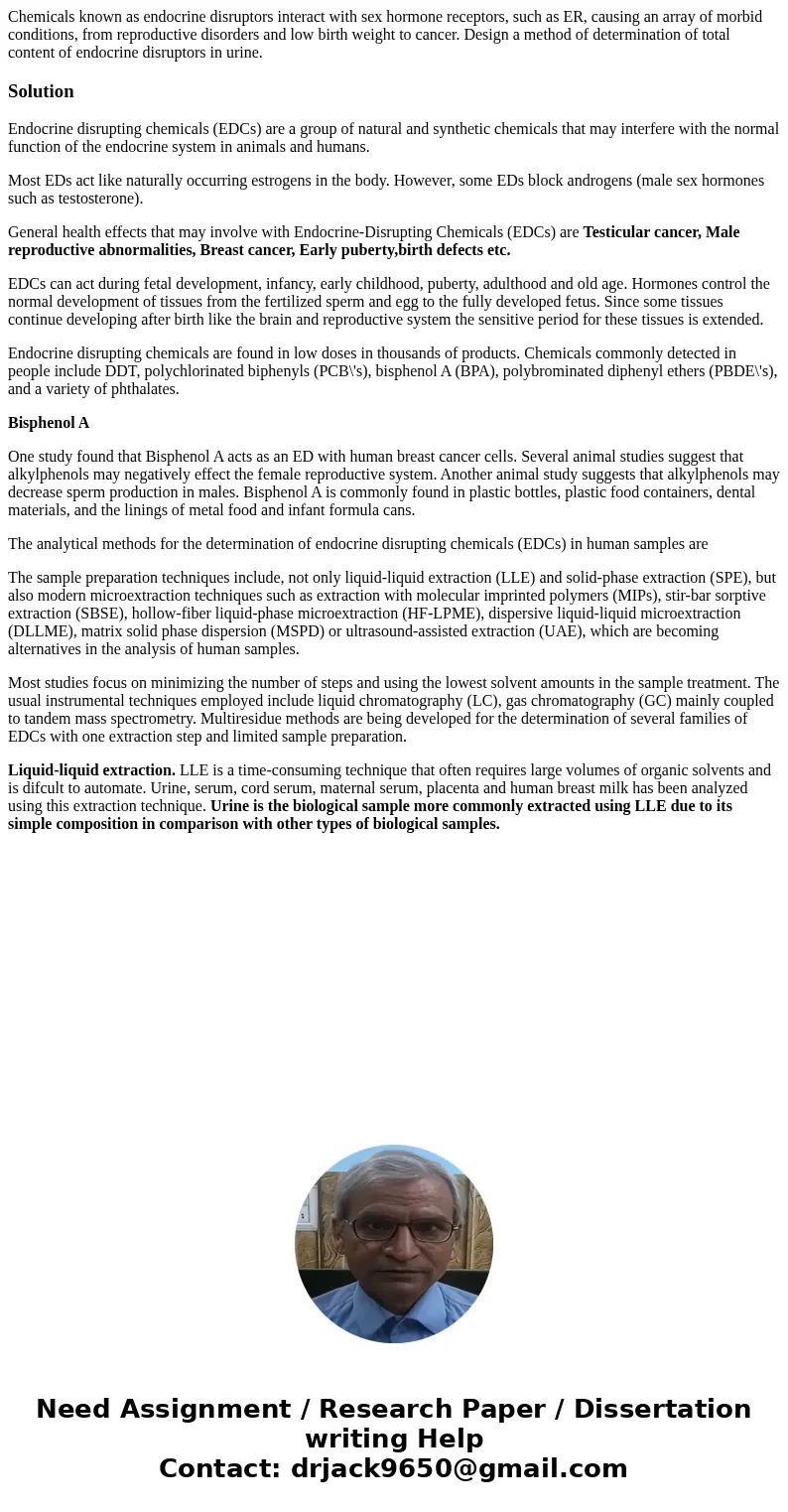Chemicals known as endocrine disruptors interact with sex ho
Solution
Endocrine disrupting chemicals (EDCs) are a group of natural and synthetic chemicals that may interfere with the normal function of the endocrine system in animals and humans.
Most EDs act like naturally occurring estrogens in the body. However, some EDs block androgens (male sex hormones such as testosterone).
General health effects that may involve with Endocrine-Disrupting Chemicals (EDCs) are Testicular cancer, Male reproductive abnormalities, Breast cancer, Early puberty,birth defects etc.
EDCs can act during fetal development, infancy, early childhood, puberty, adulthood and old age. Hormones control the normal development of tissues from the fertilized sperm and egg to the fully developed fetus. Since some tissues continue developing after birth like the brain and reproductive system the sensitive period for these tissues is extended.
Endocrine disrupting chemicals are found in low doses in thousands of products. Chemicals commonly detected in people include DDT, polychlorinated biphenyls (PCB\'s), bisphenol A (BPA), polybrominated diphenyl ethers (PBDE\'s), and a variety of phthalates.
Bisphenol A
One study found that Bisphenol A acts as an ED with human breast cancer cells. Several animal studies suggest that alkylphenols may negatively effect the female reproductive system. Another animal study suggests that alkylphenols may decrease sperm production in males. Bisphenol A is commonly found in plastic bottles, plastic food containers, dental materials, and the linings of metal food and infant formula cans.
The analytical methods for the determination of endocrine disrupting chemicals (EDCs) in human samples are
The sample preparation techniques include, not only liquid-liquid extraction (LLE) and solid-phase extraction (SPE), but also modern microextraction techniques such as extraction with molecular imprinted polymers (MIPs), stir-bar sorptive extraction (SBSE), hollow-fiber liquid-phase microextraction (HF-LPME), dispersive liquid-liquid microextraction (DLLME), matrix solid phase dispersion (MSPD) or ultrasound-assisted extraction (UAE), which are becoming alternatives in the analysis of human samples.
Most studies focus on minimizing the number of steps and using the lowest solvent amounts in the sample treatment. The usual instrumental techniques employed include liquid chromatography (LC), gas chromatography (GC) mainly coupled to tandem mass spectrometry. Multiresidue methods are being developed for the determination of several families of EDCs with one extraction step and limited sample preparation.
Liquid-liquid extraction. LLE is a time-consuming technique that often requires large volumes of organic solvents and is difcult to automate. Urine, serum, cord serum, maternal serum, placenta and human breast milk has been analyzed using this extraction technique. Urine is the biological sample more commonly extracted using LLE due to its simple composition in comparison with other types of biological samples.

 Homework Sourse
Homework Sourse